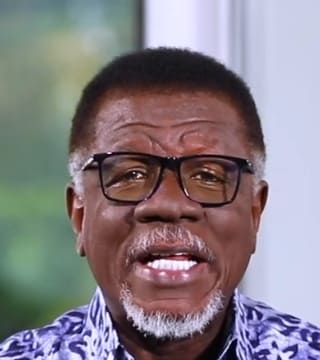Mensa Otabil - Strike the Dust
- Watch
- Donate

Welcome to a brand new week. We continue our series in Exodus, where we are looking at the plagues, their nature, and the lessons we can learn from them. So, we go to Exodus chapter 8, verse 16. So the Lord said to Moses, «Say to Aaron, 'Stretch out your rod and strike the dust of the land so that it may become lice throughout all the land of Egypt.'» After Pharaoh refused to honor his own promise to God to let the people go, the Lord issued fresh instructions to Moses. This instruction leads to the third plague in Egypt.
There is a slight difference between how the first two plagues were played out and how this one is unfolding. In the earlier plagues, the Lord instructed Moses to go to Pharaoh with a demand, a warning, and an intention. The Lord would say, «Let my people go; if you don’t let them go, this will happen to you.» But this time, the Lord spoke to Moses to act without any reference to Pharaoh, and we are not told why. Probably, the second and third plagues were meant to go together, but there is no warning. This comes as a direct action enacted.
The third plague would affect the dust of the land. You have to understand that the first two plagues affected the waters of Egypt-turning them into blood and then sending frogs-but this one shifts from the waters to the dust of the land. Dust is plentiful, and the dust referred to in this passage is the loose topsoil. This is not just the whole earth, but rather the topsoil, which is the part of the land that easily gets blown away by the wind.
Most people who have lived in the Middle East will attest that one of the most fearsome occurrences there is a sandstorm when a strong wind scatters the topsoil all over, often to the extent that it blinds you; you can’t see what is happening. This is what God is going to deploy in this third plague, stating that the dust of the earth will become lice.
So, this plague is a transformational plague. You have to understand that from the beginning of God’s encounter with Moses, the whole idea of transformation has been the theme. God said, «You turn your rod; it becomes a serpent,» so that is transformation. «You put your hand in your bosom; it transforms and becomes leprous, and then it goes back.» The concept of transformation undergirds all the plagues. God says, «I’m going to take dust, just like I took the rod and turned it into a serpent. I’m going to take dust and turn it into lice.»
I can take the elements I’ve created and transform them in any way. The lesson we learn about God here is that He is the creator and owner of the earth and the universe, and He can take anything He has created and turn it into whatever He wants. He created the dust, so He can transform it into something else He has created: lice. This is how God works in our world; He can turn nature against us or cause nature to work for us. May the Lord turn His creation and nature to favor our cause instead of fighting us. Let us pray. Say with me, «Heavenly Father, You are God over Your creation. Cause Your creation to work out Your purposes in our world. In Jesus' name, Amen and Amen.»
Well, I’ll catch you again. I’m Pastor Mensa Otabil. Shalom, peace, and life to you.
